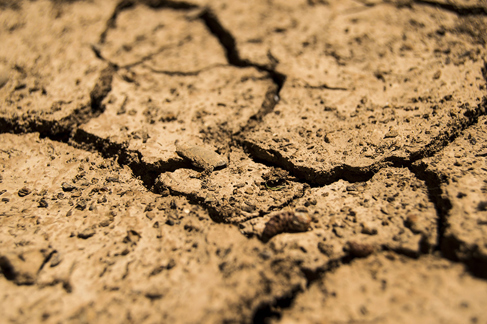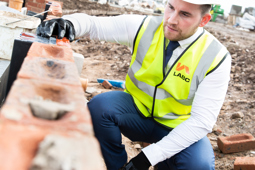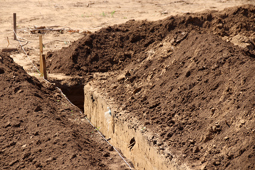
How will my soil type affect my home renovation project?
Project type
One of the important things the architect or designer you choose to work with on your structure will consider is the type of soil it will sit, on and they may consult with a structural engineer or geotechnical specialist to verify the type and ground conditions.
This is hugely important if the structure is to remain stable and not jeopardise the main structure if it’s an extension.
Clay
Clay is prone to shrinkage and heave so if the foundations aren’t deep enough (thus avoiding the less stable layer that can change depending on the weather conditions and the presence or removal of trees), and aren’t of the right type then your structure could become unstable.
Generally foundations in clay soils will be at least a minimum of 1m deep and even up to 3m deep – you may want to consider engineered or piled foundations to reduce time and potentially costs.
Trees near your proposed structure can potentially cause problems if your foundations aren’t deep enough but LABC Warranty’s Foundation Depth Calculator can help you or your designer decide how deep to go. You’ll need to identify the species, potential height of the tree and distance from any structure.
Sand and gravel
These types of soil can normally support heavy foundation loads but where the groundwater level is high or the sand or gravel is very loose different measures need to be taken and so you may need to consult a structural engineer.
Rock
Rock can be an extremely stable base to build on and the foundation may only need to be laid directly on top of it, but if it’s rock that’s impervious to water, a drainage system may need to be put in place.
Chalk
Chalk is susceptible to frost and the top layer may be quite soft as a result of this so foundations will need to be built at a depth that will avoid this layer.
Peat
Peat is extremely challenging to build on as it is often waterlogged and isn’t able to bear heavy loads. Therefore where possible the peat layer has to be excavated and the foundations build on more stable ground.
Filled ground
This is ground that has previously been dug out and filled in with rocks and debris. This generally needs to be dug out to a depth below the infill layer to find a stable base and frequently piled foundations are more suitable.
Your local authority building control team will have expert local knowledge on ground conditions and solutions so we advise you to contact them before you make your building regulations application.
Mines
There are some areas of the country where mining can affect the foundations and in those cases a specialist engineer will need to provide advice.






